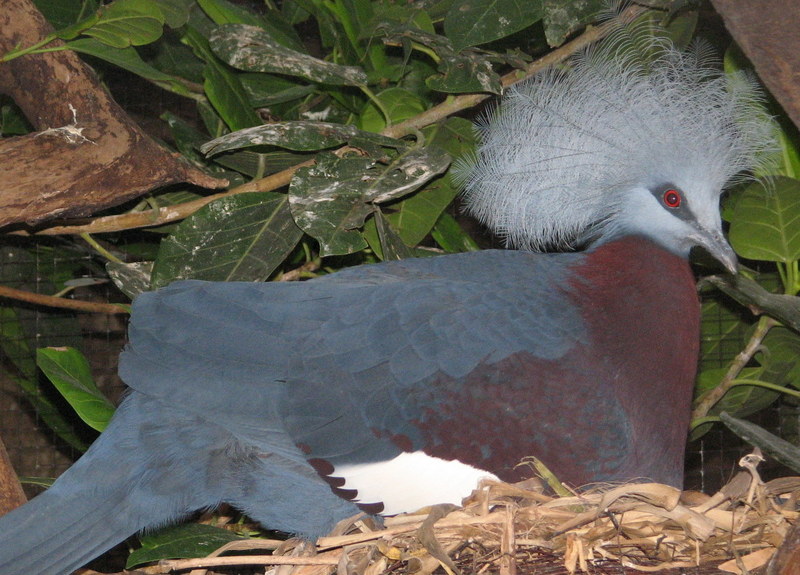|
| 질의: Pigeons | 결과: 165번째/1207 | |
Southern Crowned Pigeon (Goura scheepmakeri) - Wiki
| 제목: | Southern Crowned Pigeon (Goura scheepmakeri) - Wiki
| |

| 해상도: 1215x873
파일크기: 336552 Bytes
촬영일: 2007:12:09 16:29:59
사진기: Canon PowerShot S3 IS (Canon)
F number: f/3.5
Exposure: 1/60 sec
Focal Length: 28400/1000
등록시간: 2008:01:04 11:54:06
|
ERROR : (-30975)
Southern Crowned Pigeon
From Wikipedia, the free encyclopedia
Order: Columbiformes
Family: Columbidae
[Photo] Scheepmakers Kroonduif, Southern Crowned Pigeon, Goura scheepmakeri sclateri, Diergaarde Blijdorp, Rotterdam, december 2007. Date 9 december 2007. Author: Pbrundel. | Permission is granted to copy, distribute and/or modify this document under the terms of the GNU Free Documentation License, Version 1.2 or any later version published by the Free Software Foundation; with no Invariant Sections, no Front-Cover Texts, and no Back-Cover Texts. A copy of the license is included in the section entitled "GNU Free Documentation License". |
The Southern Crowned Pigeon aka Scheepmaker's Crowned Pigeon, Goura scheepmakeri is a large, approximately 75cm long, terrestrial pigeon confined to southern lowland forests of New Guinea. It has a bluish-grey plumage with elaborate blue lacy crests, red iris and very deep maroon breast. Both sexes are similar.
There are two subspecies of the Southern Crowned Pigeon, differentiated by their shoulder and belly colorations. Goura scheepmakeri sclateri of southwest New Guinea with maroon shoulders and blue-grey belly, and the nominate race Goura scheepmakeri scheepmakeri of southeast New Guinea with blue-grey shoulders and maroon below.
This species was first discovered new to science by Otto Finsch who found a live bird received from the dealer C. Scheepmaker in Amsterdam Zoo and named it after him.
Being tame and heavily hunted for its meat and plumes, the Southern Crowned Pigeon is evaluated as Vulnerable on the IUCN Red List of Threatened Species. It is listed in Appendix II of CITES.
http://en.wikipedia.org/wiki/Southern_Crowned_Pigeon
| The text in this page is based on the copyrighted Wikipedia article shown in above URL. It is used under the GNU Free Documentation License. You may redistribute it, verbatim or modified, providing that you comply with the terms of the GFDL. |
|
^o^
동물그림창고 똑똑전화 누리집
^o^
|
|

